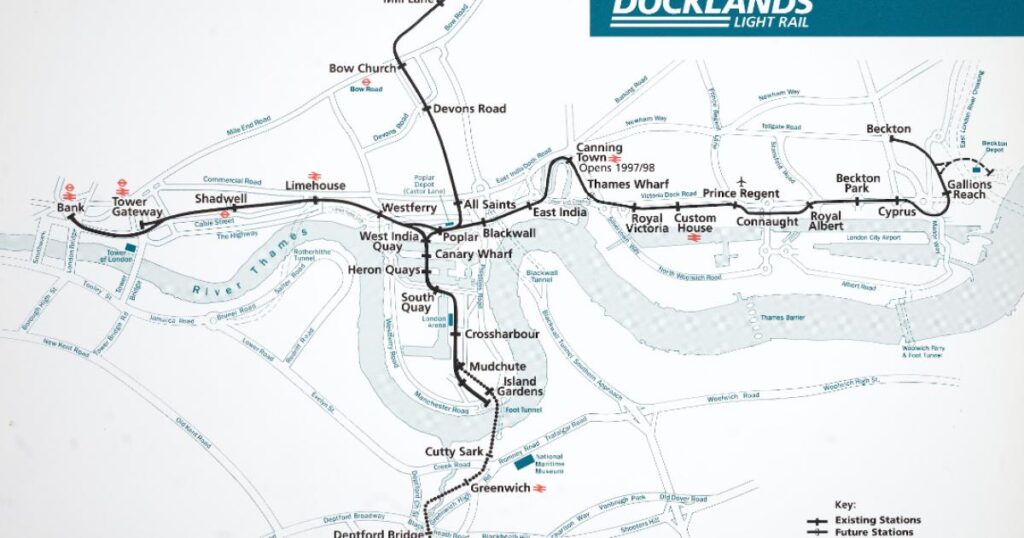First opened in 1987, the railway has grown into a series of interconnecting routes over the years, stretching from the City to south east London.
Initially built to serve the Docklands in the hope of spurring redevelopment in the area, the first trains ran from Tower Gateway or Stratford to Island Gardens.
The trains were fully automated and driverless, giving passengers the opportunity to pretend to be a train driver for the day (let’s be honest, we’ve all done it).
Over the coming weeks, we’ll be using maps to tell you the story of each of TfL’s lines. The images used in this story have been provided by TfL Corporate Archives. To find out more about the history of the London Underground visit TfL’s Google Arts and Culture page – https://artsandculture.google.com/story/welcome-to-tfl-tfl-archives/wAWRESAnwnAAnQ?hl=en

A station at Bank, which connected to the existing line through an Underground tunnel, was opened in 1991.
Three years afterwards, an extension to the railway between Poplar and Beckton was in operation.

Before the end of the Millenium, a further expansion of the route had been built, taking trains underneath the River Thames from Island Gardens to Lewisham.
The south side of the Royal Docks was the next area to benefit from the DLR, with a new branch between Canning Town and King George V opening in 2005.

Four years later, an extension of this spur under the river brought trains to Woolwich Arsenal.
In 2011, ahead of the London 2012 Olympics, the newest section of the DLR opened, between Stratford International and Canning Town via West Ham.

The first of 54 new walk-through, air-conditioned trains are expected to be rolled out on the network before the end of this year.
A further extension of the Beckton branch is also expected over the next decade, with new stops at Beckton Riverside and Thamesmead.
Today, the railway spans 34km of track and calls at 45 stations on three separate branches.




